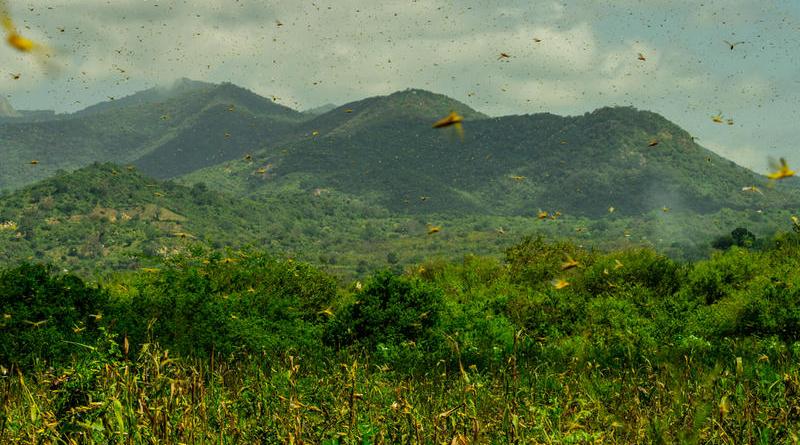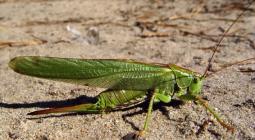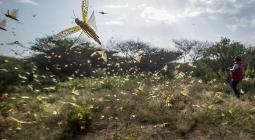Toxic Pesticides Employed in The Control of Desert Locusts.

Since 2019, Kenya has experienced an unprecedented threat from the desert locust invasion. This invasion that is linked to climate change puts millions of Kenyans at risk of food and nutrition insecurity. To prevent such risks, it is imperative that these voracious pests are controlled before they cause much damage to crop and pasture. While some of the control efforts put in place by the Kenyan government are laudable, some are questionable. Measures such as the use of toxic pesticides that have been scientifically proven to cause harm to either the environment, humans or non-target organisms such as bees, fish and ants to control locusts raise pertinent questions.
Fenitrothion, Chlorpyrifos and Fipronil are some of the hazardous active ingredients fronted by the Pest Control and Produce Board (PCPB) to the Ministry of Agriculture for the control of the desert locusts. Fenitrothion for instance, is a non-selective insecticide known for its toxicity to reproductive systems, as well as altering the hormonal system in humans. Its toxicity extends to aquatic species and bees which are essential in food production.
Chlorpyrifos on the other hand affects brain development especially in children, reproduction and the nervous system. It also has high toxicity towards aquatic species, bees, terrestrial insects and birds. For this reason, it is categorised as a highly hazardous pesticide. Whereas Fipronil is also poisonous to fish and bees, it is the most persistent (length of time in the environment) insecticide used in locust control. In Madagascar, between 1996 and 1999, Fipronil was used to control African locusts, an action that led to the death of several birds and mammals leading to its withdrawal for use against locust swarms.
These chemicals are dangerous to human health as recently seen in a news feature dubbed wings of calamity, where residents and animals from affected areas were instructed to vacate the area to be sprayed for at least three days. The lingering question is what happens to the bees, water sources and farmlands that contain food crops? It is evident that these communities will be exposed to toxic pesticides for many days to come.
Given the evidence of their environmental and human health toxicity, the basis on which they were approved for the control of desert locusts in Kenya remains a mystery. It is therefore imperative for the Kenyan government to protect the local residents, the natural environment and biodiversity. To do this, the government must embrace the use of biopesticides to safeguard Kenyans.
Biocontrol methods involve the use of less toxic ways to control the desert locusts. This includes formulations such as Green Muscle and Novacrid which contain the fungi Metarhizium that only kills locusts and does not contaminate the environment. Green Muscle for instance has been effective in countries such as Yemen and Tanzania for the control of Desert locusts and red locusts respectively.
There is also the use of Neem oil to repel locusts and the digging of trenches to bury the locusts. These locally available ways of controlling locusts are not only key in protecting fragile ecosystems but also ensure that our right to safe and healthy food is upheld.
The government needs to commission an impact assessment to establish the effects of the pesticides used on human health, non-target organisms, soil and water, and actively work towards embracing biocontrol methods in locust control. In doing this, the government will be safeguarding Kenyans from toxic pesticides that affect essential ecological functions upon which we are dependent.
By Claire Nasike, Food Campaigner, Greenpeace Africa.
19 February 2021
GREENPEACE





